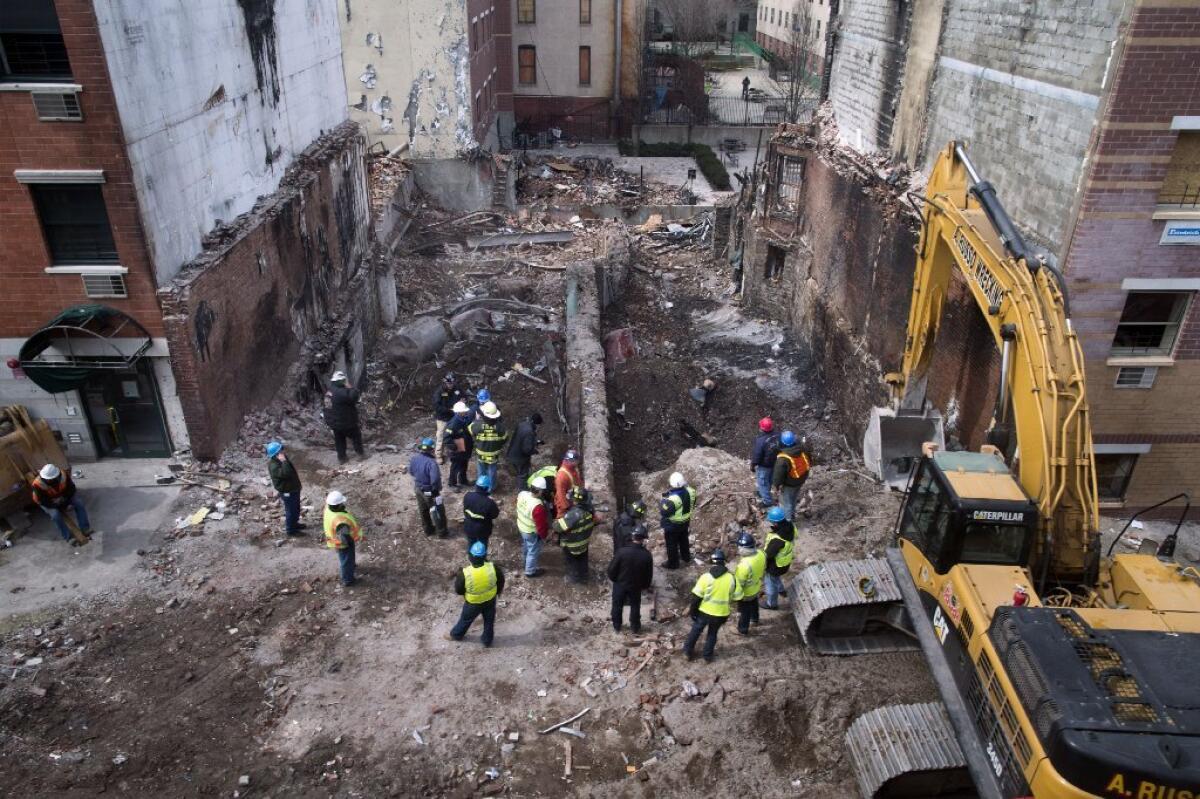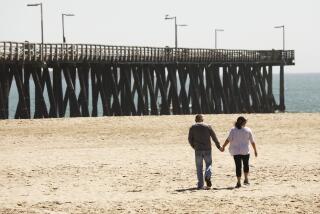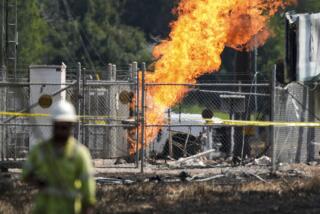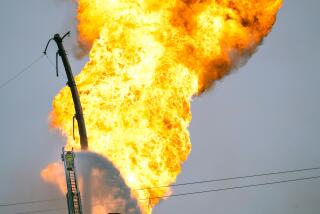Leak found in New York City gas main near site of fatal blast

NEW YORK -- The main pipeline running beneath Park Avenue on the block where a blast killed eight people was leaking outside one of the buildings destroyed, investigators said Tuesday, but they have not determined the cause of the leak.
It also is too soon to know whether that leak is what caused the massive March 12 explosion in East Harlem, which destroyed two buildings between 116th and 117th streets.
The discovery of the leak came as officials from the National Transportation Safety Board, which investigates pipeline blasts, conducted pressure tests on the cast iron gas main and the smaller feeder lines that serve buildings on the block.
“Tracer gas pumped into the main and a leak survey identified a leak adjacent to ... one of the collapsed buildings,” the federal agency said in a statement.
This follows the announcement last week by the NTSB that tests done immediately after the blast showed high concentrations of natural gas in the ground near where the explosion occurred. In some holes bored into the ground by investigators, the concentration of gas was as high as 20%.
“Normally, the soil in New York City … would have zero concentration of natural gas,” Robert Sumwalt of the NTSB said at a briefing last week.
The confirmation of a leak in the gas main is likely to focus attention on the pipe’s age. The 8-inch pipe was installed in 1887, as were many of the gas mains running beneath New York City’s streets. The smaller feeder lines were installed in 1991.
Investigators say age alone should not cause problems if the pipe is properly maintained and if the ground and other pipes around it, such as water mains, do not cause damage.
The NTSB said no leaks had been discovered in service lines feeding buildings along Park Avenue.
The explosion occurred about 9:30 a.m. on March 12, shortly after someone called the utility company to report a gas odor outside one of the affected buildings. That caller said the smell had also been present the night before, but nobody called Con Edison to report it until it was too late.
Con Edison, police and fire officials say they have no records of any calls about possible gas leaks from the area going back more than a year. In addition, Associated Press reported that its own survey of calls to the city’s 311 complaint line dating back more than a year did not turn up any calls about gas problems from the buildings that blew up.
Those killed included a 21-year-old restaurant cook and 67-year-old dental technician. All were killed by blunt-force trauma or by the fire that erupted after the blast.
More to Read
Sign up for Essential California
The most important California stories and recommendations in your inbox every morning.
You may occasionally receive promotional content from the Los Angeles Times.











